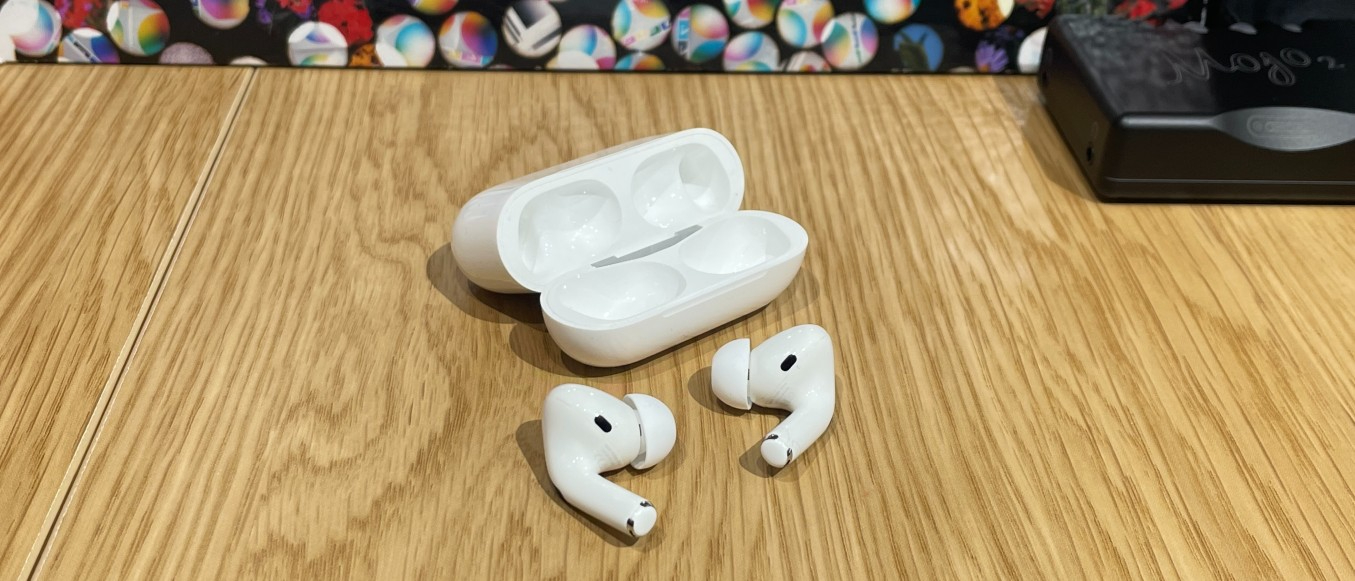What Hi-Fi? Verdict
The noise-cancelling AirPods Pro can be beaten for sound, but they are a joy to live with and use all day, every day – especially if you're an Apple device user
Pros
- +
Exceptionally comfortable
- +
Strong noise-cancelling
- +
Balanced, easy-going sound
Cons
- -
Noise-cancelling impacts timing
- -
Sony rival sounds more engaging
Why you can trust What Hi-Fi?
Divisive though the original AirPods were, they have certainly been a hit. In fact, Apple claims the standard AirPods are the most popular headphones in the world.
But, despite their abundance and the rather magical user experience they offer (for Apple fans especially), the AirPods have their flaws. The second-gen model brought with it a boost in sound quality, which the AirPods 3 then took further once again, but they're still a fair way from delivering the sonic satisfaction of the very best wireless earbuds at their price point.
The fit is a bigger issue: one-size-fits-all might be the approach, but for some people the AirPods simply don’t fit at all. And while some appreciate the non-invasive fit, the complete lack of noise isolation makes them ill-suited to certain scenarios.
These are all issues that Apple has sought to address with the AirPods Pro, the first active noise-cancelling earbuds from the tech giant (launched in 2019). These sit above the standard AirPods and have now evolved into the current flagship AirPods Pro 2 (which boast improved features and stunning five-star sound quality) that now supersede them, ever since they went on sale in September 2022.
But there's still life – and a discount or two – to be had with the first-gen model. While not the best-sounding noise-cancelling earbuds for the money, the AirPods Pro can still be a joy to own and use, especially if you're fully ensconced in the iOS ecosystem.
- Read our five-star Apple AirPods Pro 2 review
- AirPods 3 vs AirPods Pro (1st Gen): which are better?
- Should you buy AirPods? Are Apple's wireless earbuds worth it?
Price
The AirPods Pro launched at £249 ($249 / AU$399), but since our original review, they've been replaced by the AirPods Pro 2. Their successors launched in September 2022 and Apple raised a few eyebrows when it announced there wouldn't be any price hike for the new pair.
Shop around and you might find be able to find the originals with a discount, but we'd still recommend a discounted pair of Sony WF-1000XM4 or a pair of Sennheiser Momentum True Wireless 3 over them. If you want to stick with Apple, we'd suggest saving a little extra for the 2nd Gen Pros as they're such a big step up from the originals.
Comfort
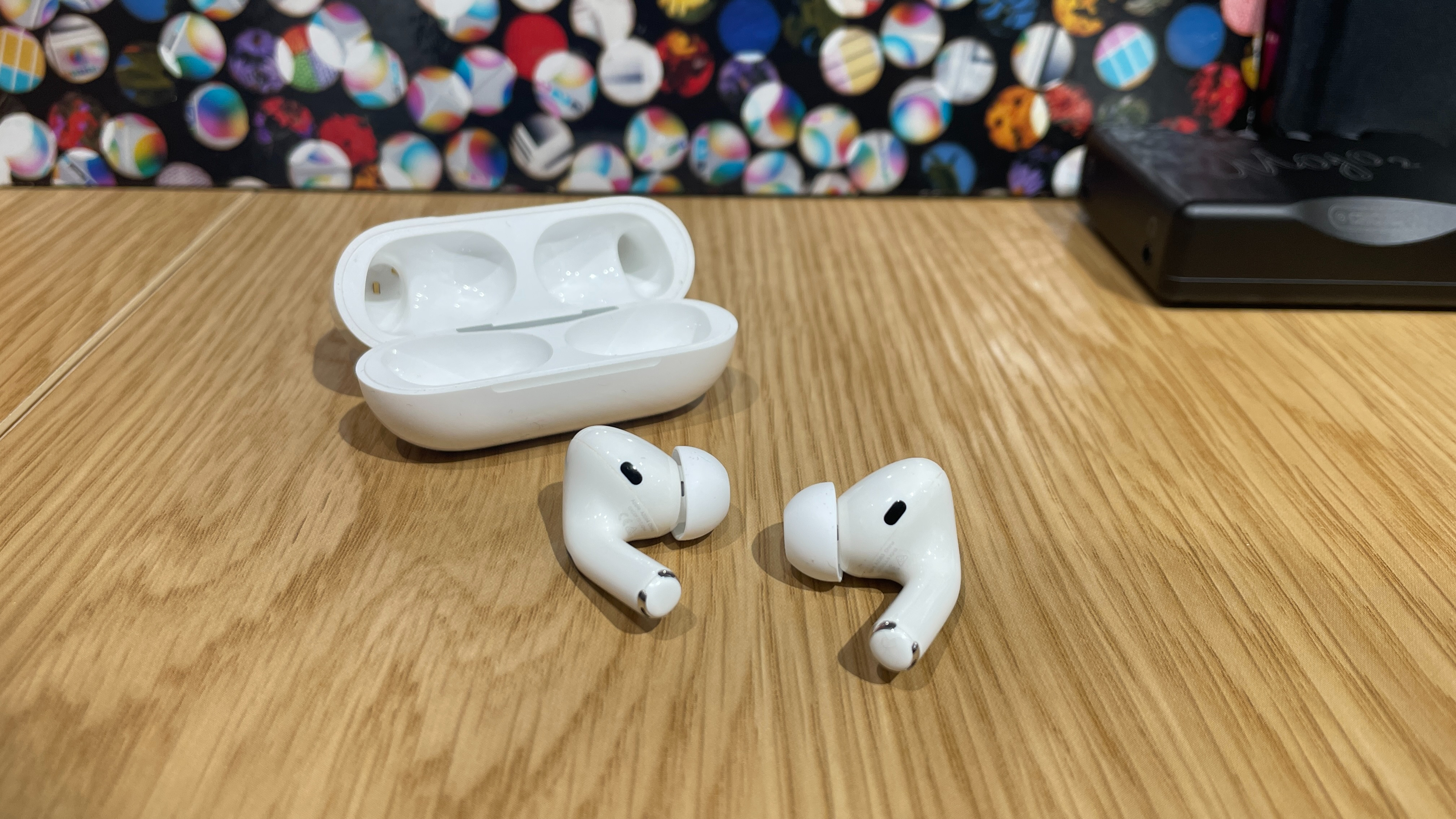
While there’s no denying the familial similarities between the AirPods 3 and AirPods Pro – the glossy white finish, protruding stem and bulbous body – there are clear differences, too. Most obvious is the silicone tip of the Pro model, which is shorter in length than on many in-ear headphones and elliptical rather than round.
That main body is chunkier, too – presumably to accommodate the extra components. The Pro's stem was shorter than the original AirPods' one when they arrived, making them less conspicuous when worn, but now the AirPods 3 has mimicked that shorter-stem design.
Where the original AirPods responded to taps to the body, the AirPods Pro's controls are located in the stems, which now contain force sensors (a design trait the new AirPods have also copied). A quick squeeze on either stem pauses or resumes a track (or answers an incoming call), a double-squeeze skips forward, a triple-squeeze skips back and a long squeeze switches between noise-cancelling modes.
However, we’re not completely convinced by this approach. The squeezes are fiddly to perform, particularly when running or cycling, which you may well do with the AirPods Pros thanks to their sweat- and water-resistance. They're not as sports-focused as rivals such as the Bose Sport Earbuds and Beats Fit Pro, but running in the rain is all good.
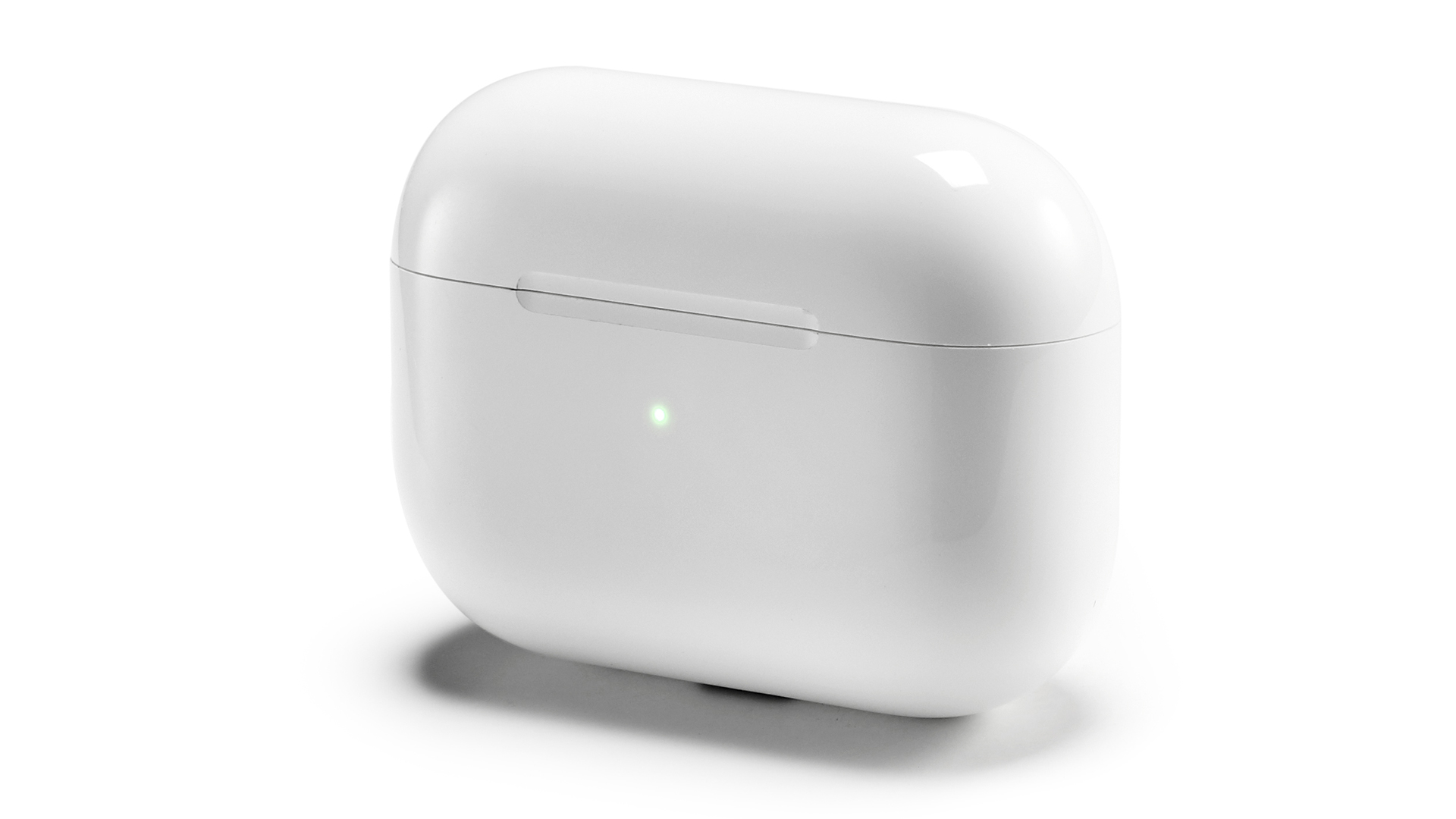
The AirPods Pro generally stay in the ears well when running. They are so light (5.4g each) and comfortable that they can give the impression of not being secure, but they refuse to budge in action. Some people may manage to shake them loose, but they are much more secure in place than the original AirPods. Third-party fins/hooks that make the fit even more secure are also now fairly widely available and have been tried and liked by members of the review team.
Apple supplies just three pairs of tips, with two of those hidden beneath a flap at the bottom of the box. The message here is that the pre-attached, medium-sized pair should fit most, and you should only dabble with the others if there’s an issue.
You don’t even have to identify an issue yourself – click on the AirPods Pros in the Bluetooth menu of your iPhone and you’ll find, among other options, an ‘Ear Tip Fit Test’ that, when tapped, plays five seconds of music that’s analysed in order to identify any sound leakage. Get a green ‘Good Seal’ result and you’re ready to go, but if the Pros identify an issue you’ll be prompted to try a bigger or smaller tip.
This is an impressive feature, largely because the Pros don’t feel like most in-ear headphones in that they burrow into the ear canal significantly less and generally exert a lot less pressure. In short, they’re more comfortable, but that comfort can initially be mistaken for looseness.
Also contributing to the ‘barely there’ feel of the AirPods Pros is a series of vents that allows air to flow between your ear and the outside world. That might sound odd, but it reduces that pressurised feeling that you often get from noise-cancelling buds.
Build
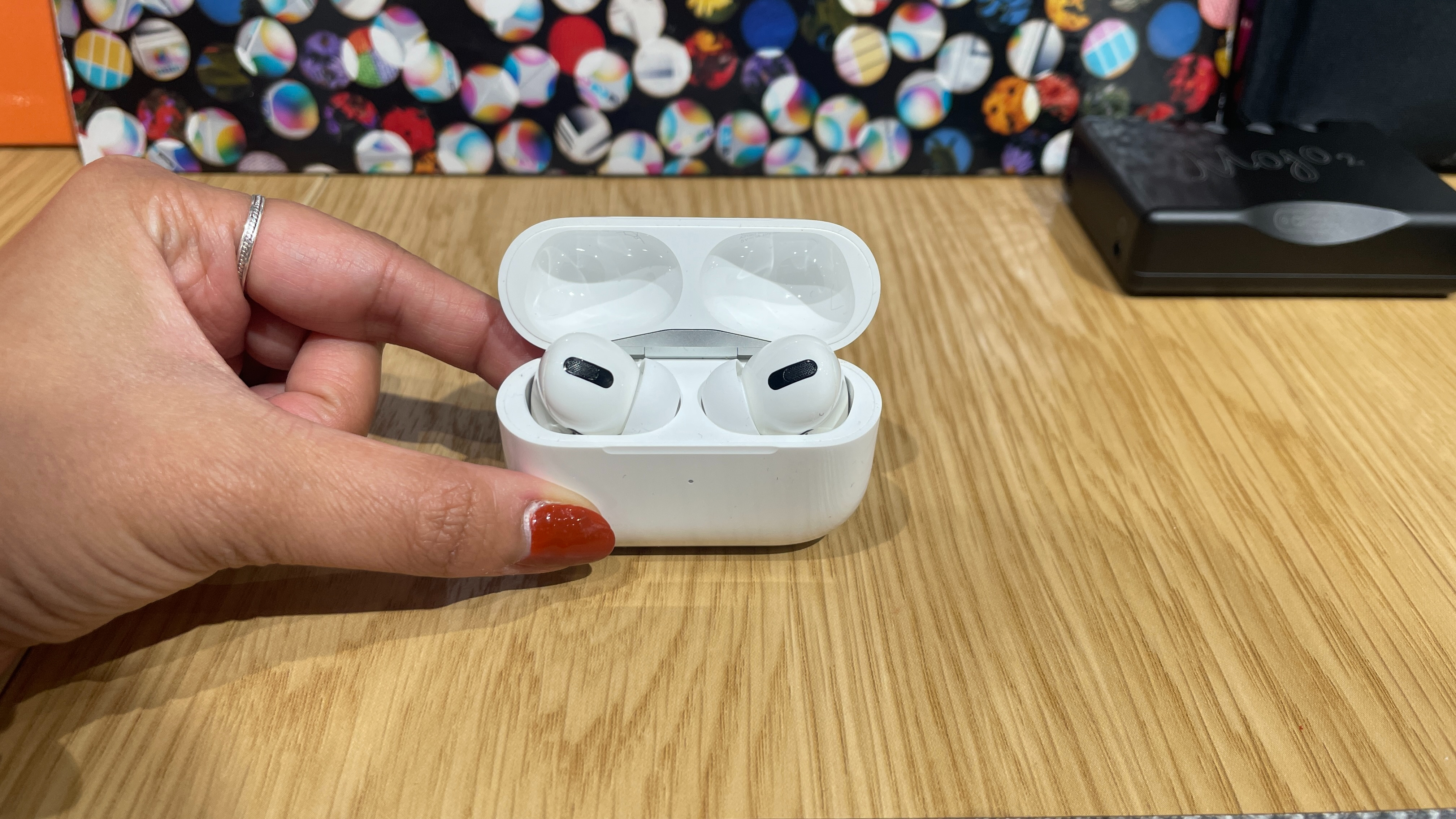
The biggest change here is, of course, noise-cancelling, and Apple’s implementation is typically techie. Each Pro has two microphones: one on the outside to detect incoming noise that can be cancelled out by anti-noise, and one on the inside that detects any noise that makes it through the seal and also analyses how your music is responding to the individual geometry of your ear.
What’s most impressive is that the noise-cancelling is continuously adjusted 200 times per second. Apple claimed at launch that these were the only headphones to take this approach, but at the very least it's now been repeated by Apple's own AirPods Max on-ears.
The good news is that the noise-cancelling is effective. Predictable, constant noises such as a train are more or less eradicated, while less predictable sounds such as office chatter are reduced to a whisper. And, as promised, there’s no sense of the air being sucked out of your ears when you engage the noise-cancelling – something that we encountered yet again with the Pro 2 model.
Apple has ignored the trend for user-selectable noise-cancelling modes. Instead, noise-cancelling is either on or off. The exception is the ‘Transparency’ mode, which actively allows sound in from the outside world.
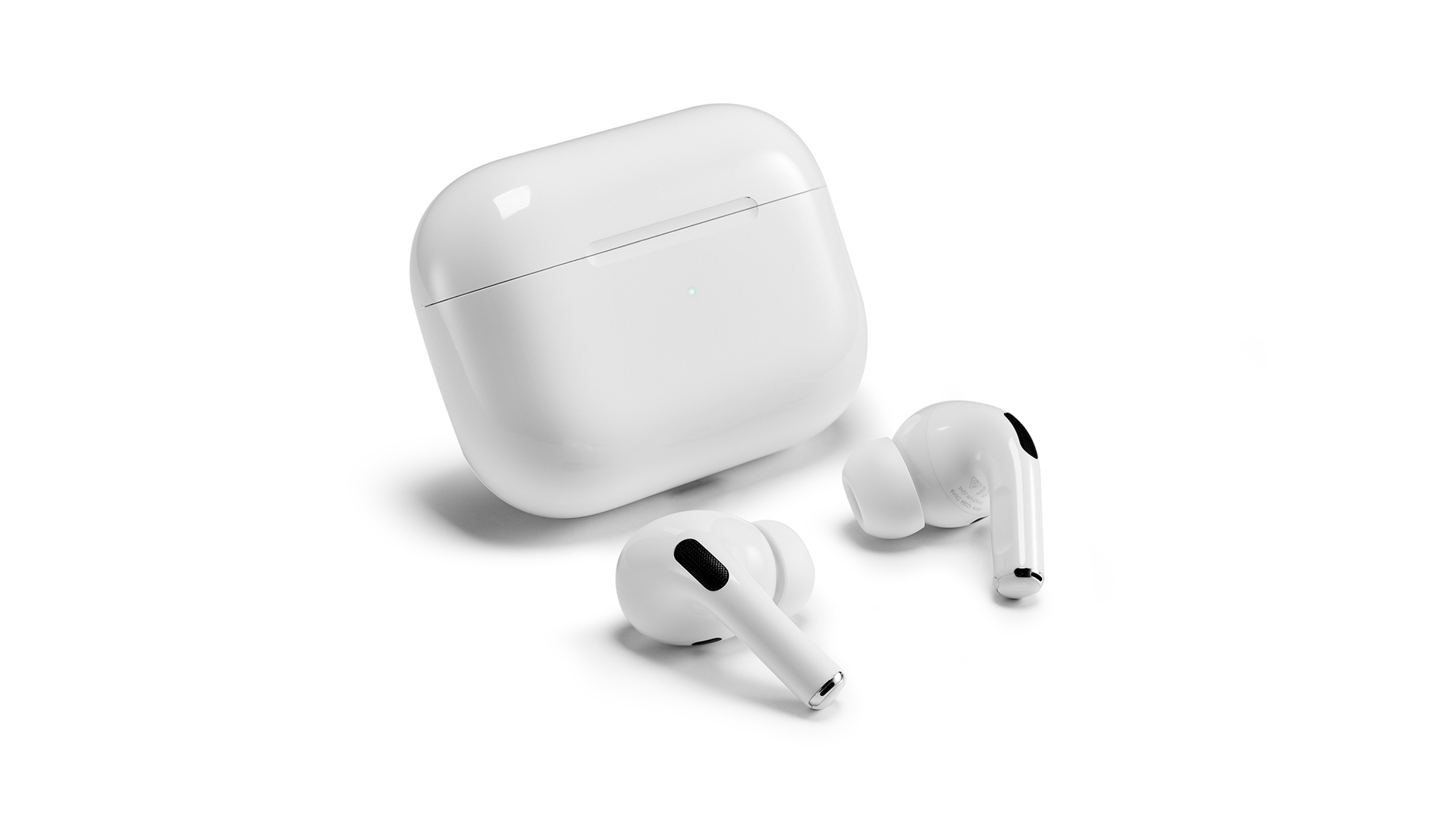
Type True wireless earbuds
Bluetooth Yes (AAC, SBC)
Noise-cancelling Yes
Battery life 5 hours + 19 hours from charging case
Weight 5.4g per bud
This is another extremely impressive feature. Many noise-cancelling headphones have a similar feature, but it often comes across as unnatural and synthetic, with some sounds amplified louder than others and the blend between external noise and your music seemingly not quite right.
Use Transparency on the AirPods Pro, though, and it’s remarkably similar to using a pair of completely non-isolating headphones. This is again down to the vents and continuous processing, according to Apple. There seems to be a slight enhancement to midrange sounds, which helps you hear voices, but it's done subtly enough that it never feels anything other than completely natural.
Powering the whole experience is the same H1 chip that's built into the second- and third-gen AirPods. This is already renowned for enabling a flawless wireless performance and supremely quick pairing. We've been living with the AirPods for years now and have experienced no drop-outs and have found the automatic pairing, which instantly connects to your phone when you insert an earphone, to be predictably brilliant. This feature was made even better towards the end of 2020 when Apple released a software update that allows the AirPods Pro to automatically switch between your Apple devices.
That same update brought with it support for Apple's spatial audio technology, which adds virtualisation of Dolby Digital 5.1, 7.1 and Dolby Atmos soundtracks in a bid to make them more immersive. Via the AirPods Pro, this feature doesn't hit the same, surprisingly cinematic heights as it does via the AirPods Max, and app support is patchy (Apple TV and Disney+ do, but Netflix and Amazon Prime Video do not), but it's still very impressive indeed with the right content (try the opening of Gravity if you want to give it a go). If you're an Apple Music subscriber, the spatial audio tracks are worth checking out, especially with the dynamic head-tracking feature that's now available for the original Pro.
The H1 chip also allows Apple's voice assistant to be invoked by the 'Hey Siri' command, although it can also be activated by a pinch of one of the stems. One disappointment is that Siri is the only method for adjusting volume without reaching into your pocket for your phone's controls. Other brands, including the H1 chip-toting Beats Fit Pro, have managed to squeeze physical volume controls into their true wireless earphones and we wish Apple would do the same. Apple has rectified this in the AirPods Pro 2 model (which sports the newer H2 chip), where swiping up and down on the newly touch-capacitive stems lets you change volume.
Battery life is a claimed five hours for the earphones with another 19 hours from the charging case and, in our time living with the original AirPods Pro, those figures have proved to be, if anything, conservative. The case itself is wider than that of the standard AirPods but also squatter, resulting in a package that’s actually not much larger in terms of volume. If the earphones run out of charge, five minutes back in the case will give you another hour of listening.
Sound
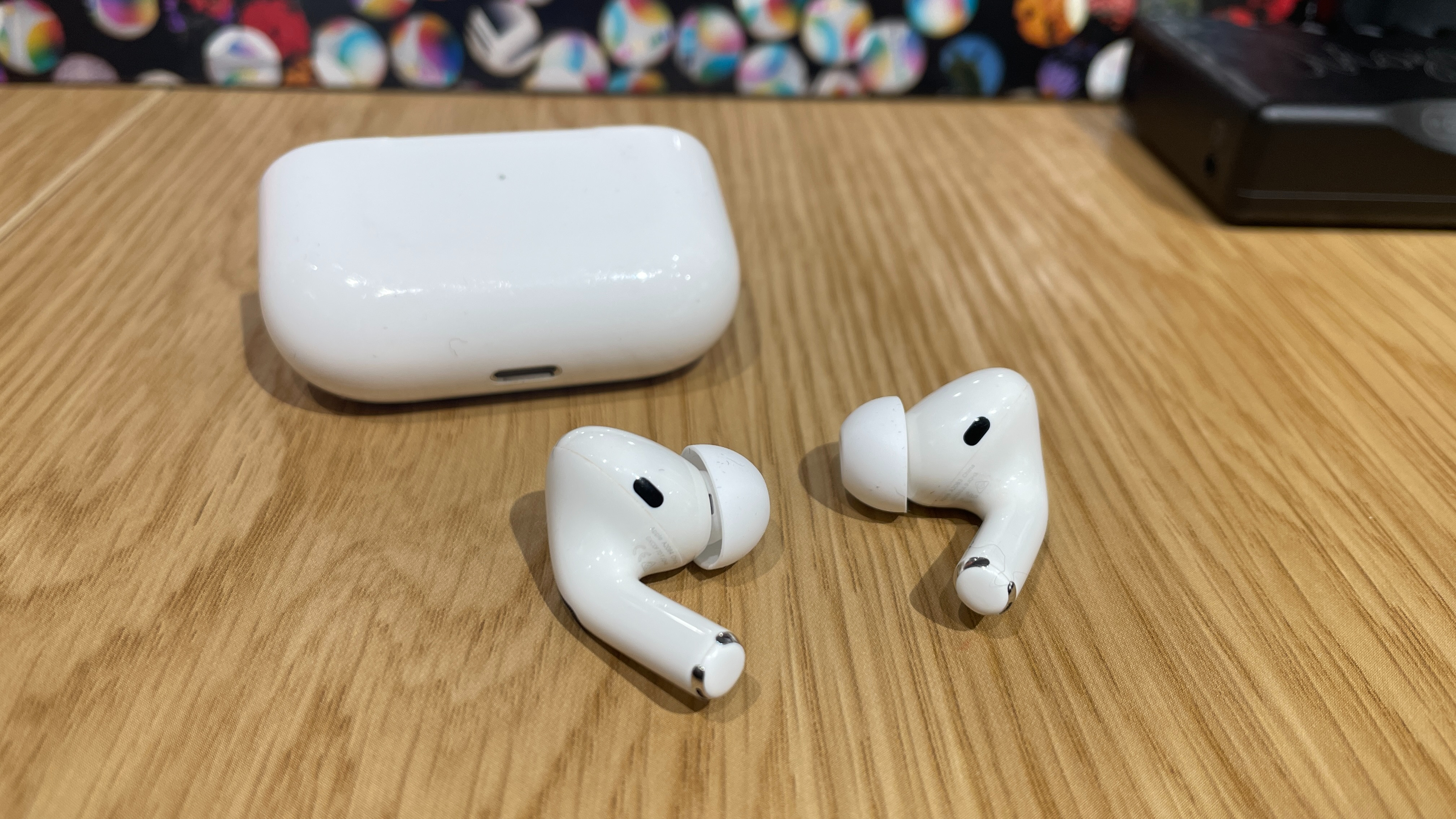
Sonically, Apple has taken the same approach with the Pro as with its other products, favouring clarity and a neutral tonal balance rather than lots of weighty bass.
That said, the performance does alter slightly when noise-cancelling is switched on. Playing R.E.M.'s Belong via Tidal and switching between noise-cancelling modes, we notice that 'Off' produces a slightly tonally richer and rhythmically crisper performance. There's an extra warmth to Michael Stipe's unusually deep, spoken vocals, a little more texture to that bubbling bassline, a more engaging punch to notes and greater overall cohesion.
Even here, though, the AirPods Pro aren't quite able to match the sound quality of the Sony WF-1000XM4 and they are easily bettered by its newer, flagship sibling the 2nd gen Pro. Both the Sony and newer AirPods Pro 2 are that bit more dynamic and attacking, but the original Pro still counter with a more easygoing nature that ensures nothing sticks out unpleasantly. Even the lowest quality Spotify streams sound acceptable.
The Pro also achieve something that few other in-ears do: they combine the directness inherent in the design with an open airiness that's far harder to achieve. That feeling of the sound being pumped directly into your brain is far less intense here and, while you're not quite fooled into thinking you're listening out loud, there is a spaciousness that allows instruments to breathe.
There isn't a ton of bass here, but that's not to say that the AirPods sound lightweight – bass is just more balanced and considered. The midrange is where the AirPods Pro really shine, though, with vocals reproduced with plenty of texture and detail. There's good sparkle to treble, too, but with no hint of brightness sneaking in.
But switch on Noise Cancellation or Transparency (which sound broadly the same except for added outside noise) and there is a small step down in sound quality. Here, there's a touch of sibilance audible in the vocals of some tracks and a slight comparative lack of tonal warmth that's most noticeable in the bass. More significantly, timing takes a bit of a hit, which manifests itself in tracks losing a bit of overall impact, possibly down to all of that on-the-fly processing when noise-cancellation is enabled.
None of this is a huge issue and shouldn't put you off using noise cancellation when you need to escape the noise of a plane, train or crowded office, or Transparency mode when you want to reduce the possibility of being run over when out for a walk. We would recommend switching both modes off when they're not strictly necessary, though.
Verdict
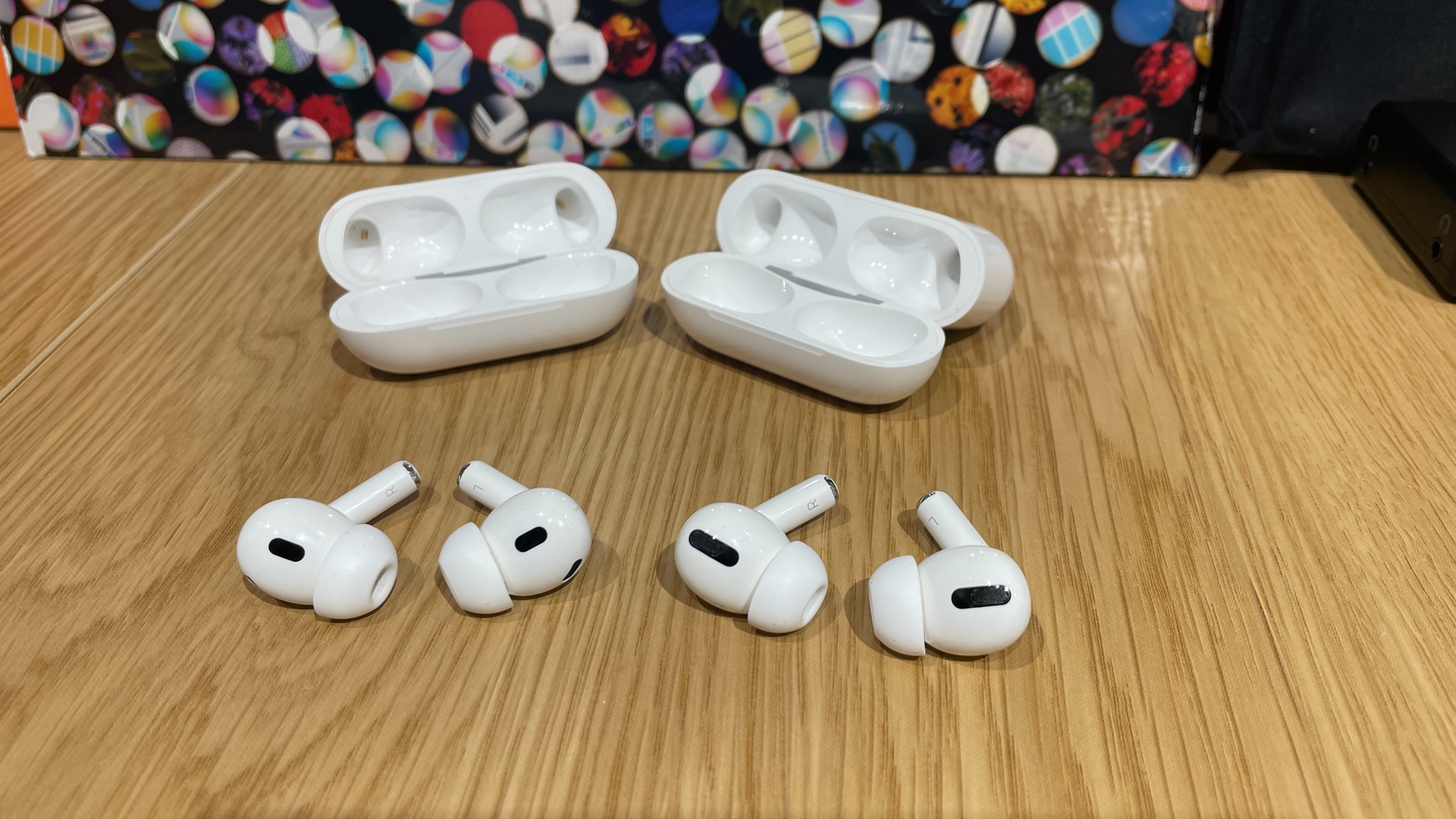
The AirPods Pro can't quite match the best-in-class true wireless noise-cancelling earbuds for sound quality, but the user experience (especially if you're an iOS user) and unprecedented levels of comfort still make them a very strong option in the category.
By combining that excellent noise-cancelling with a transparency mode that feels almost as natural as wearing non-isolating earphones, Apple has created a pair of earbuds as well suited to a long-haul flight as they are to a run around the block. For many people, the Pro model could be the only pair of headphones they ever need.
The AirPods Pro 2 make an even better case for that, delivering improvements across the board, especially where sound quality is concerned. If you're looking for the best in-ear AirPods that you can currently buy, we'd strongly suggest you investigate the second-generation variant.
SCORES
- Sound 4
- Comfort 5
- Build 5
MORE:
The best wireless earbuds you can buy
Sony WF-1000XM4 vs Apple AirPods Pro – which are better?
AirPods Pro 2 (2022) vs AirPods Pro: what are the differences?
The best AirPods deals on the internet
What Hi-Fi?, founded in 1976, is the world's leading independent guide to buying and owning hi-fi and home entertainment products. Our comprehensive tests help you buy the very best for your money, with our advice sections giving you step-by-step information on how to get even more from your music and movies. Everything is tested by our dedicated team of in-house reviewers in our custom-built test rooms in London, Reading and Bath. Our coveted five-star rating and Awards are recognised all over the world as the ultimate seal of approval, so you can buy with absolute confidence.
